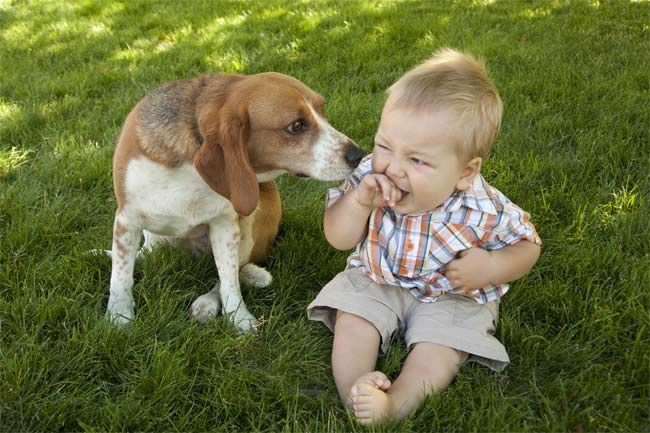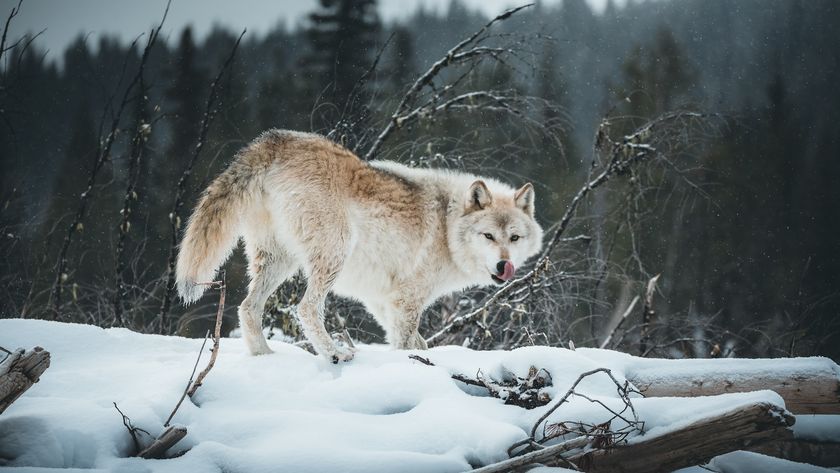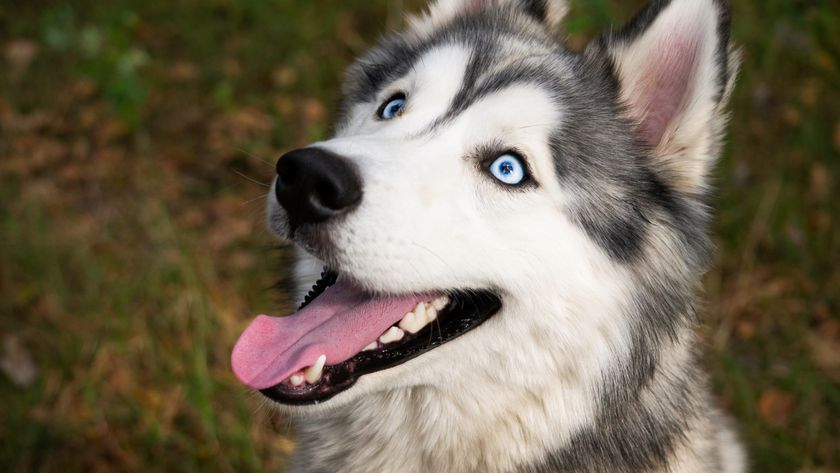Babies Grasp Dogs' Emotions

Dogs may be man's best friend, but babies might also really understand Fido.
A new study found that 6-month-olds can match the sounds of an angry snarl or friendly yap with photos of dogs showing the corresponding body language.
The results, published in the July issue of the journal Developmental Psychology, suggest that babies can decipher emotions even before they learn how to talk.
"Emotion is one of the first things babies pick up on in their social world," said lead researcher Ross Flom, a psychology professor at Brigham Young University in Utah.
Barking dogs
The study involved 128 infants, with 32 from each of four age groups (6, 12, 18 and 24 months), who had little or no exposure to dogs. The babies first looked at two images of the same fluffy canine, one showing the dog in an aggressive posture and facial expression while the other showed the dog in a friendly stance. The researchers wanted to figure out whether infants had a preference for one expression over the other before including the dog barks. They didn't.
Then, the researchers played a 2-second sound clip of either a friendly or threatening dog bark while the child viewed the two images. In the next trial, the other sound clip (aggressive or friendly) was played.
Sign up for the Live Science daily newsletter now
Get the world’s most fascinating discoveries delivered straight to your inbox.
The researchers videotaped the young participants as they looked at one or both of the dog images (or glanced around the room, at a parent, or elsewhere). The 6-month-old babies spent most of their time staring at the matching photograph, so a mean bark would garner a stare at the dog with the vicious facial expression.
"The six-month-olds would look in that direction and kept looking in that direction," Flom told LiveScience. "The older kids would glance at it and then kind of look away as if to say, 'Oh yeah, I get it, it goes with that face. The task is ridiculous. I'm going to move on and look somewhere else around the room.'"
Baby smarts
The results suggest both 6-month-olds and babies up to 2 years old could distinguish a rowdy bark from a benign one. But the older babies just showed their correct responses differently than the 6-month-olds.
Past research in the field of baby smarts has relied on the proportion of time a baby looks in a certain direction or the proportion of time he or she exhibits some other signal of response to show a baby's skills in distinguishing facial expressions or intonations in speech patterns. These studies have suggested that while 6-month-olds are experts in verbal and facial perception even when it comes to monkeys, as they get older they lose this ability.
The idea is that babies are born with a full toolbox of broad abilities. Over time, as they experience the world, the toddlers refine their abilities and focus on what's really relevant, say, human faces rather than monkey or dog mugs.
But according to the new results, perhaps the little ones don't lose the ability, Flom said. They just show it differently. So instead of calculating the time spent looking in a certain direction, researchers could take into account a baby's first glance, he added.
- Video – How Babies Learn Music
- Baby News & Information
- Video – Irresistible Puppies
Jeanna Bryner is managing editor of Scientific American. Previously she was editor in chief of Live Science and, prior to that, an editor at Scholastic's Science World magazine. Bryner has an English degree from Salisbury University, a master's degree in biogeochemistry and environmental sciences from the University of Maryland and a graduate science journalism degree from New York University. She has worked as a biologist in Florida, where she monitored wetlands and did field surveys for endangered species, including the gorgeous Florida Scrub Jay. She also received an ocean sciences journalism fellowship from the Woods Hole Oceanographic Institution. She is a firm believer that science is for everyone and that just about everything can be viewed through the lens of science.












